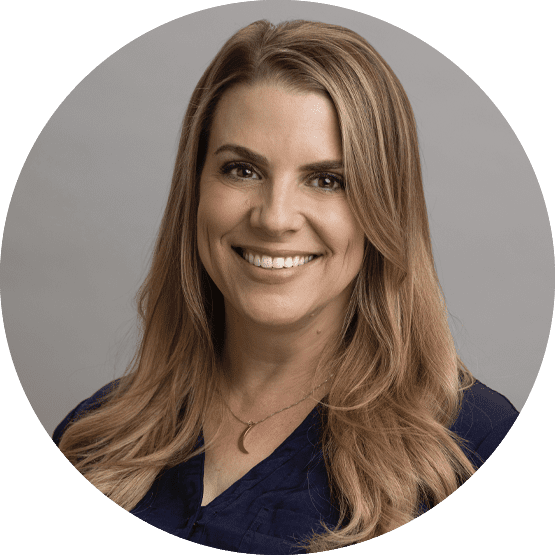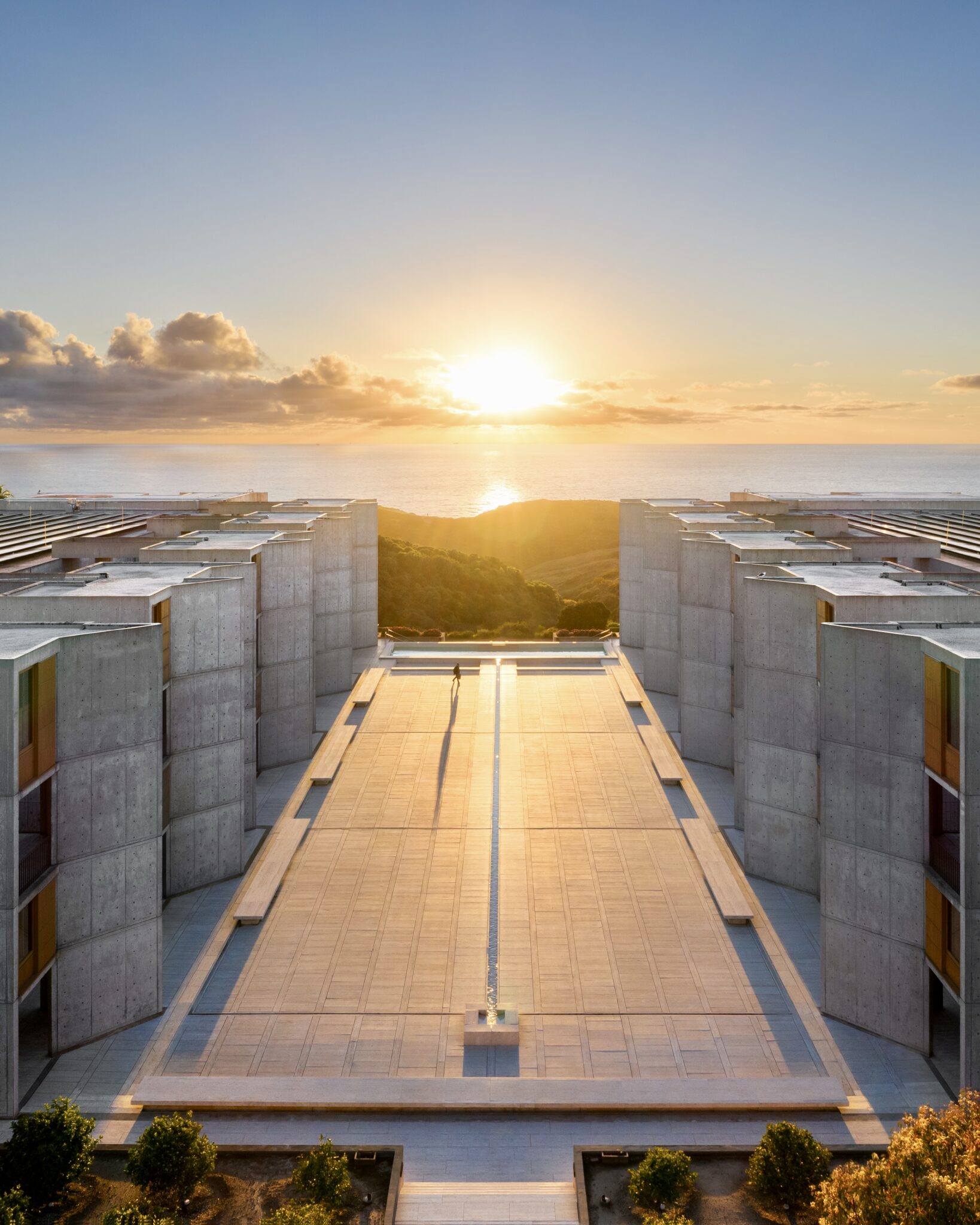At the Salk Institute, groundbreaking science converges with iconic architecture, shaping a legacy of innovation and inspiration.
Nestled on the bluffs atop Black’s Beach, the Salk Institute for Biological Studies in La Jolla is not only an integral staple of the surrounding mesa of biomedical and biotech mesa science, but has also been at the forefront of architecture, two legacies that have continued at the 10010 N. Torrey Pines Road campus for about 60 years.
The Salk Institute began as a project of Jonas Salk, who developed the first effective polio vaccine. Salk envisioned a “collaborative environment where researchers could explore the basic principles of life and contemplate the wider implications of their discoveries for the future of humanity,” according to the Institute’s website.
Architecture
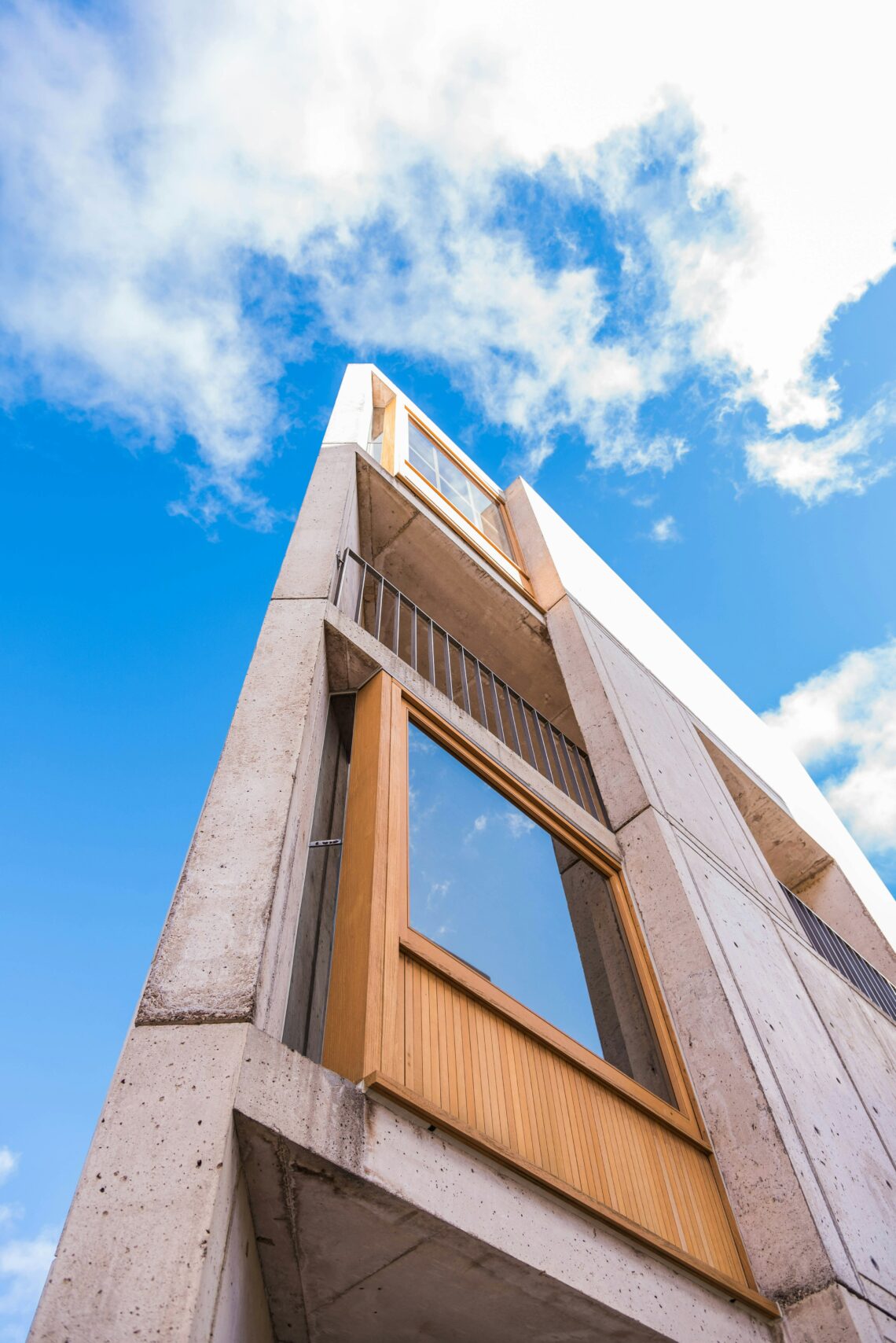
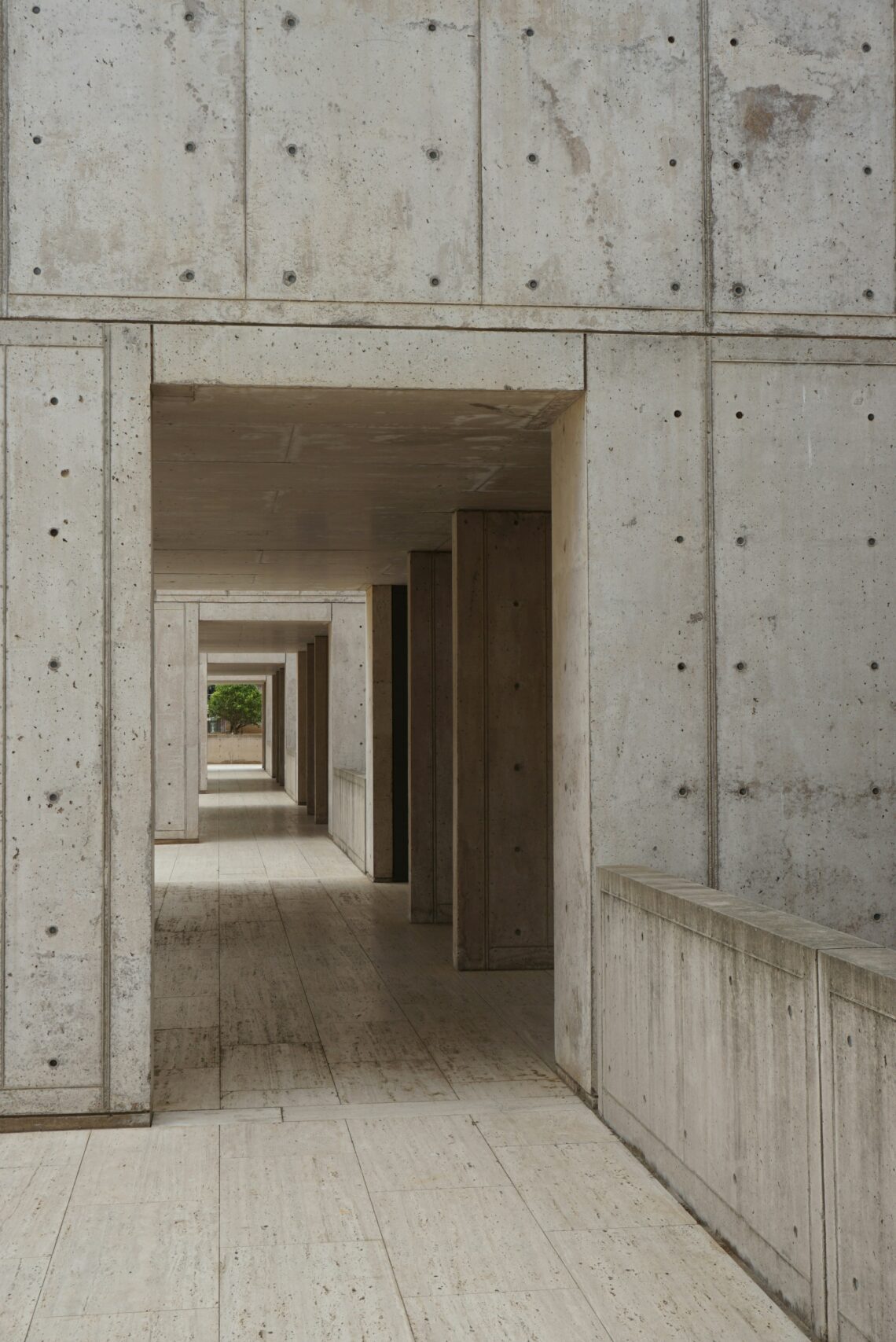
Salk enlisted the design work of architect Louis Kahn, calling on Kahn to mold the 27 acres the city of San Diego gifted Salk in 1960 into an adaptable, open space conducive to discovery and inspiration.
The result, finished in 1965, stands as one of “Kahn’s finest works and an iconic work of modern architecture with international significance,” according to the Getty Conservation Institute.
“There isn’t an architect on the planet that is unaware of the Salk Institute, Louis Kahn’s 1965 masterpiece of brutalist architecture,” architect Bob Borson wrote in 2017.
Brutalism – an architectural style featuring angular lines with minimalist concrete and other materials – is exemplified at Salk in the focal point of the renowned courtyard, where two mirror-image buildings seem to march toward each other and converge on a plaza bifurcated by a water feature called “River of Life,” symbolizing the “constant trickle of discoveries spilling into the greater body of knowledge … the Pacific Ocean,” the Salk site states.
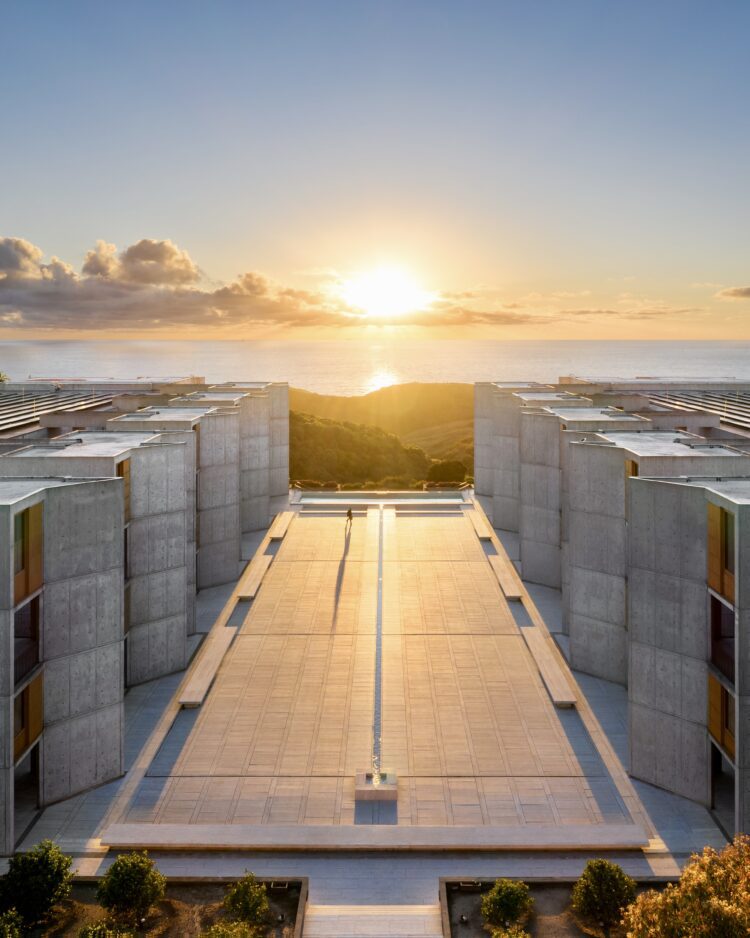
And twice a year, the sun sets directly in line with the River of Life, on the spring and fall equinoxes. Photo courtesy of https://alexnyeart.com/.
The Salk Institute was designated historic by the city of San Diego in 1991 and nominated by the state for the National Register of Historic places in 2006.
The courtyard’s landmark quality has inspired other forms of art worldwide, from a 2017 Kota Ezawa mural that stood in The Village until 2023 to the Salk Institute being the stage for its first fashion show in May 2022, when the global brand Louis Vuitton chose to host its 2023 Cruise Collection there, a San Diego debut.
Jonas Salk
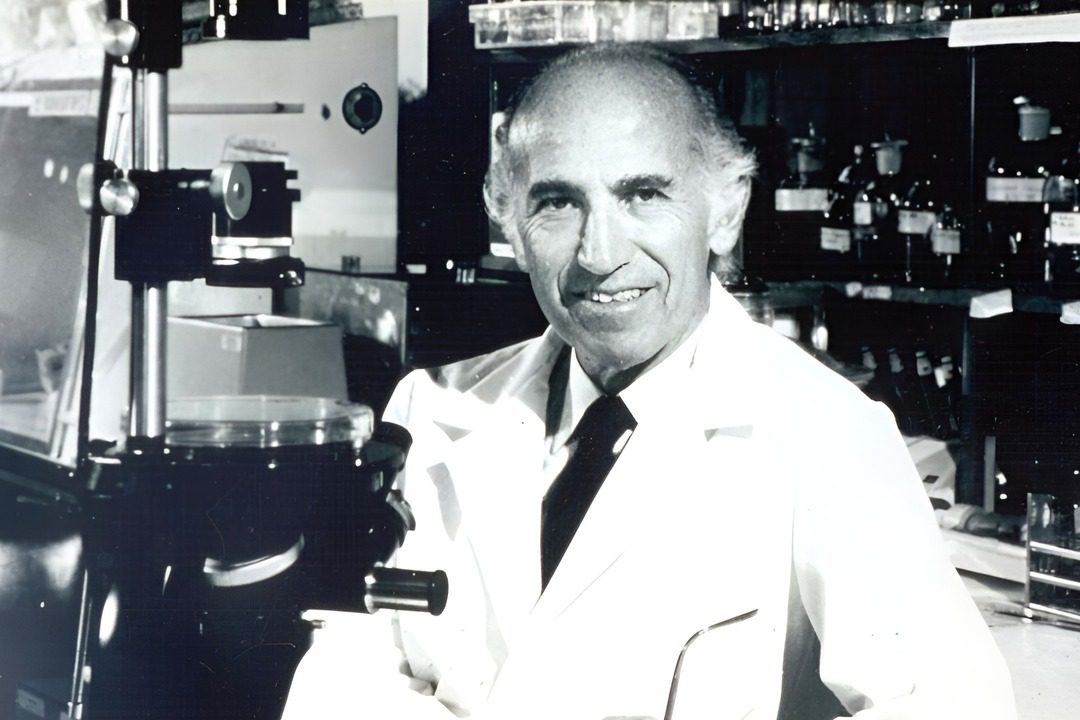 A trend setter himself, Salk was born in New York City in 1914 and was the first in his family to attend college, later earning a medical degree from the New York University School of Medicine and turning to scientific research.
A trend setter himself, Salk was born in New York City in 1914 and was the first in his family to attend college, later earning a medical degree from the New York University School of Medicine and turning to scientific research.
Salk worked at the University of Michigan on an influenza vaccine and later ran the Virus Research Laboratory at the University of Pittsburgh School of Medicine, where he turned the microscope on paralytic poliomyelitis, or polio.
Polio threatened children every summer for the first half of the twentieth century, with millions infected virally. One in 200 infected people would end up in a paralytic phase, where breathing would cease.
Salk’s vaccine behaved counter to then-current scientific protocol; Salk’s method of using dead polio cells to immunize without infection proved successful on its first patients – including Salk, his first wife and their children.
Salk’s polio vaccine was declared safe and effective in 1955; Salk chose not to patent or sell the vaccine, wanting it widely available to help eradicate the virus.
Salk founded the Salk Institute for Biological Sciences in 1963, using a $20 million grant from the National Science Foundation and support from the March of Dimes.
Salk and his first wife, Donna Lindsay, divorced in 1968; he met late artist Françoise Gilot in 1969 and married her in 1970.
Salk spent the later years of his life efforting development of a vaccine against AIDS.
Salk died of congestive heart failure in 1995 and is buried in San Diego.
The Salk legacy
The Salk Institute lives on, still operating in its founder’s vision to study areas including neuroscience, cancer, aging, immunobiology, computational biology and more, funded by grants from the National Institutes of Health, private donations and other organizations.
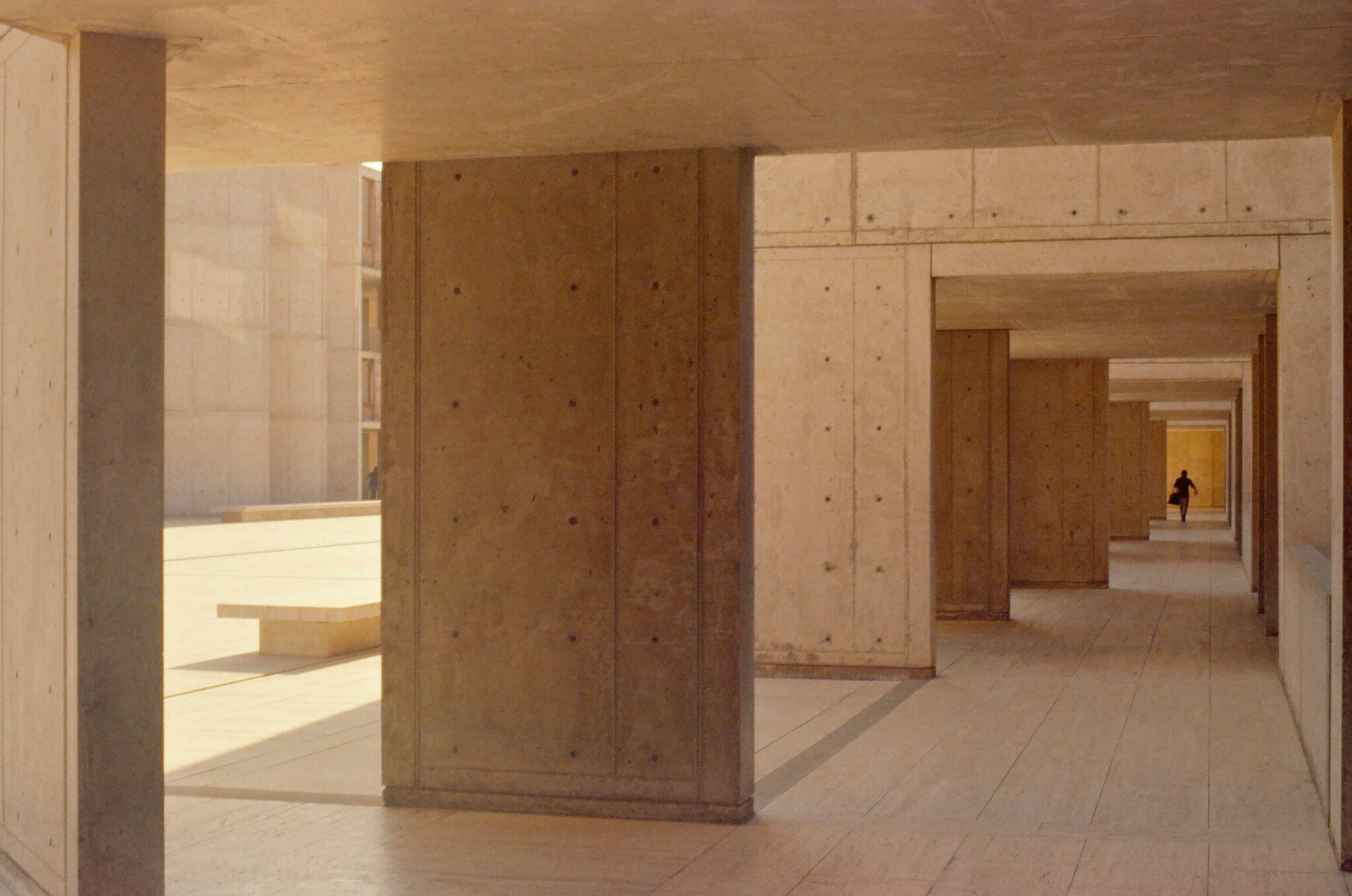
The architecture of the campus, meant to be art, is also intended to facilitate discovery, per Salk’s direction: the walls are drywall and can be broken down and reconstructed to create a collaborative space for researchers to learn from each other.
Though modern problems exist with the massive concrete walls hampering wi-fi capabilities, the 29 separate buildings nonetheless alternate laboratory and study spaces intended to promote continued innovation well into the future.
And the future is not without assistance in evolution: the Salk Institute’s spaces have been revised and expanded a few times.
In 2013, the Getty Conservation Institute partnered with the Salk Institute on a project addressing the aging and maintenance of the buildings’ 203 teak window wall assemblies, a major architectural feature.
The Salk Institute is currently undertaking plans for a $250 million science and technology center, though that project has encountered unexpected delays.
Visiting the Salk Institute
To see the Salk Institute for yourself, register for a one-hour, $25 docent-led campus tour, held at 11 and 11:30 a.m. every Wednesday, Thursday and Friday.
